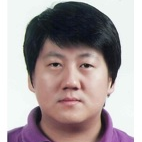Recent Trends of Computer Vision and Pattern Recognition for Ecological Monitoring and Sensing
A special issue of Sensors (ISSN 1424-8220). This special issue belongs to the section "Environmental Sensing".
Deadline for manuscript submissions: 25 April 2024 | Viewed by 6033
Special Issue Editors
Interests: intelligent biological monitoring; biological image detection/recognition; behavioral monitoring and analysis; automated bio-monitoring systems; marine monitoring systems
Interests: ecological modelling; ecological informatics; computational behavior
Special Issue Information
Dear Colleagues,
Great progress has been made in artificial intelligence in recent decades, and it has been changing the ways in which ecology and environmental studies have been undertaken. Computer vision and pattern recognition are the most commonly applied AI techniques in this field. Advanced computer vision techniques provide automated and accurate solutions for obtaining biological and ecological monitoring data, such as population, behavior, and biodiversity data. Computer vision-based tools can release scientists and researchers from the tedious work of biological data processing. Pattern recognition techniques can provide an in-depth investigation of the biological monitoring data for exploring the mechanisms of ecosystems and environmental changes. The in situ mining of biological and ecological patterns is able to predict potential risks in ecosystems in reality, such as environmental pollution and disasters. Computer vision and pattern recognition were used to establish the advanced ecological sensing system. This Special Issue is organized to collect recent works and research ideas in AI-based methodologies, technologies, and applications in ecological monitoring and sensing.
Topics should include, but are not limited to, the following:
- Biological image classification/detection and its applications
- Computer vision and pattern recognition in biodiversity/wildlife monitoring
- Computer vision and pattern recognition in ecological risk assessment
- Computer vision/sound-based biological object tracking
- Computer vision and pattern recognition in agricultural/forest monitoring
- Computer vision and pattern recognition in fishery/marine monitoring
- Computer vision and pattern recognition in epidemics and disease transmission
- Ecological remote sensing data
- Pattern analysis of biological data
- Ecological data mining
- Related AI applications in environmental, agricultural, and marine ecosystems
Dr. Chunlei Xia
Prof. Dr. Tae-Soo Chon
Prof. Dr. Zongming Ren
Guest Editors
Manuscript Submission Information
Manuscripts should be submitted online at www.mdpi.com by registering and logging in to this website. Once you are registered, click here to go to the submission form. Manuscripts can be submitted until the deadline. All submissions that pass pre-check are peer-reviewed. Accepted papers will be published continuously in the journal (as soon as accepted) and will be listed together on the special issue website. Research articles, review articles as well as short communications are invited. For planned papers, a title and short abstract (about 100 words) can be sent to the Editorial Office for announcement on this website.
Submitted manuscripts should not have been published previously, nor be under consideration for publication elsewhere (except conference proceedings papers). All manuscripts are thoroughly refereed through a single-blind peer-review process. A guide for authors and other relevant information for submission of manuscripts is available on the Instructions for Authors page. Sensors is an international peer-reviewed open access semimonthly journal published by MDPI.
Please visit the Instructions for Authors page before submitting a manuscript. The Article Processing Charge (APC) for publication in this open access journal is 2600 CHF (Swiss Francs). Submitted papers should be well formatted and use good English. Authors may use MDPI's English editing service prior to publication or during author revisions.
Keywords
- AI in ecology
- biomonitoring
- image classification
- ecological modeling
- biological image analysis
- object detection
- animal tracking
- ecosystem assessment







